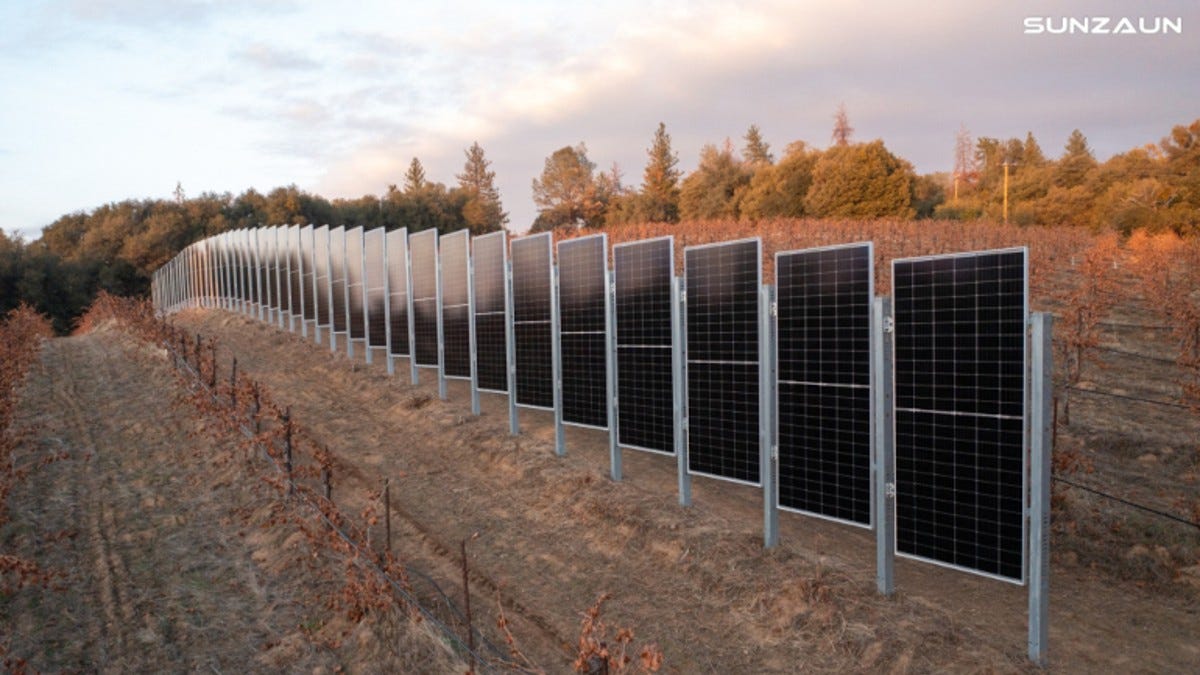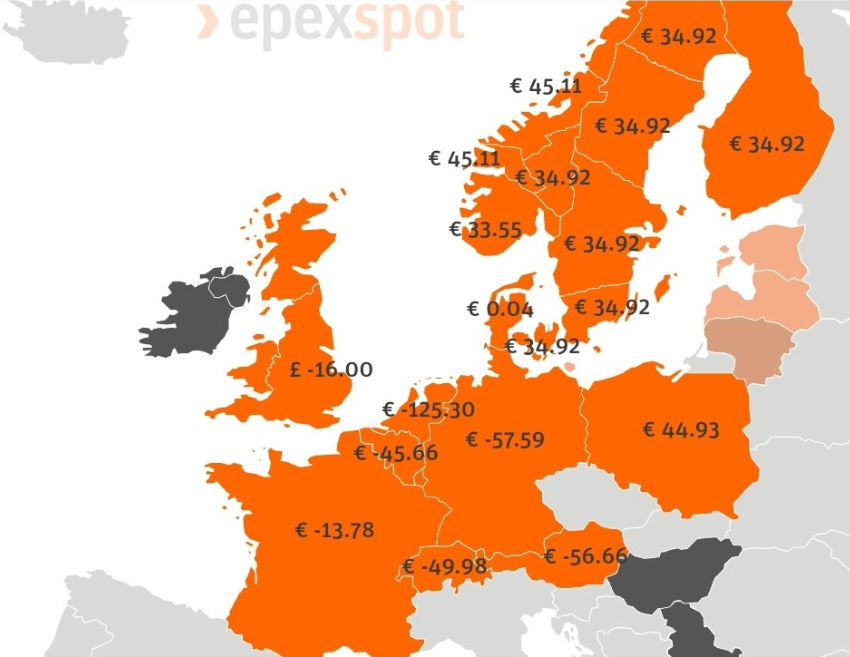The rise of vertical solar
A post explaining why vertical solar has a bright future
You may find the concept of vertical solar puzzling: why opt for an orientation that generates less energy? At first glance, it might appear illogical. However, there are compelling reasons for this approach, and I'm convinced that we'll start seeing an uptick in the prevalence of vertical solar installations. This post aims to shed light on the rationale behind this trend.
This article is an extended version of a thread I posted recently on X/Twitter, which garnered significant attention.
The plummeting value of solar modules
The first crucial factor to note is that the price of solar modules has significantly decreased, to the point where the cost of the module is no longer the primary cost driver in a solar installation. Recently, the price of solar panels has dropped to $0.1 per watt, a stark contrast to a decade ago when they were approximately eight times more expensive.

Of course, the cost of the solar panel is not the full cost of an installation, especially for residential projects. Labor cost for example is a preponderant factor. For a more in-depth analysis of the cost of a solar project, see my previous post.
The value of vertical solar
Parallelly to cost, it is worth looking at the solar value1. We consider for this article the day-ahead market prices for evaluating the value of solar. We use the concept of capture price, which the market price weighted by solar generation2. Hereunder is the capture price per hour and per week for Germany in 2023 (one cell is the average of 7 hours then). What is clear is that the afternoon hours during the sunny months have much lower capture rates, even negative in some hours (red cases). “Solar off-peaks” (7 to 10 AM and 5 to 8 PM) clearly capture a higher price.
Capturing these higher values
Vertical solar can help capturing these higher values, especially with the generalization of bifacial solar panels. In this research paper, three orientations have been presented: inclined South (i-S, black line), vertical East-West (v-EW, green line), and vertical North-South (v-NS, blue line).
We can clearly see the different profiles depending on the orientation. The vertical East-West is particularly interesting as the peak generation comes at the start and the end of the day. Of course, these results are dependent on the latitude of the installation (the graph hereunder is for Germany).
From a system perspective, one intriguing attribute is the potential complementarity of the profiles. The dashed line on the above graph demonstrates this complementarity for a particular combination. Traditionally, our focus has been on maximizing total output, which led us to concentrate on a single orientation. However, if we shift our focus towards value capture (an indicator that helps us understand when the system requires additional output), vertical profiles would likely become more appealing.
Alignment with incentives
Nevertheless, practically, few solar installations are actually impacted by market prices. There are various mechanisms that incentivize maximizing total production instead of maximizing total value, as we have described in previous posts (Contract-for-differences, feed-in-tariffs, and net metering). With such incentives, vertical solar might not be seen as attractive as the total electricity generated per watt installed is lower3 than the most-productive orientations.
These misaligned incentives are even provoking some strong negative prices, such as on Saturday 6 April (hereunder prices for 2 PM). Even with these negative prices, many solar producers (especially the smaller ones) have no incentive to stop producing.
Turning solar into fences
Even though incentives might not be aligned, we start to see vertical solar appearing in various places, driven mostly by the plummeting cost. For example, some people are starting to install solar as outdoor fences. The Financial Times has recently made a story about it4. Installing solar as fences enable the homeowner to save on the cost of a traditional fence. Here is a picture that I have personally taken in Albania in a residential complex.

Such an installation does not come without practical questions including the potential vandalism. Nevertheless, as solar is gaining traction, this kind of installation will probably become increasingly common and some practical questions might find reasonable answers.
This is another example in Germany. More explanations are given on the link to the post.

Solar alongside road and railways
Another example, is the idea to use vertical solar alongside road and railway as presented by a recent study from the European Commission's Joint Research Centre (JRC):
The findings reveal a potential PV capacity of 403 GWp within the European Union (EU). This is the equivalent to 55% of the EU's total solar PV capacity target set for 2030. Using bifacial PV modules, these systems could generate 391 TWh (terawatt hours) of clean electricity annually.
Although the potential for vertical solar is undeniably substantial, the financial implications may not be as clear-cut as the study suggests. The study solely presents the economic results in terms of LCOE (Levelized Cost of Energy), which doesn't fully encapsulate the competitiveness of solar energy, particularly on this scale. As previously discussed in another post, LCOE alone isn't adequate for comparing diverse sources of electricity.
Other ideas for vertical solar
Here are a few more ideas and pictures on vertical solar. Another advantage of vertical solar is the limited spaced used, which creates a number of new potential applications.
For starters, vertical solar can be installed in agricultural land, reducing the space required and still allowing for certain agricultural activities to be carried out on the same land.

Another idea is to use it in combination with greenhouses. Interestingly, the reflection on the greenhouses even increases the solar yield.

Finally, buildings can serve as a basis for installing vertical solar. Of course, with this configuration, only one side of a solar panel can be used.

Last word
The cost of solar power has significantly reduced, leading to innovative installation methods emerging, such as vertical solar. Although it might not seem intuitive initially, vertical solar presents an intriguing option, especially for countries situated far from the equator5.
Traditional solar installations have primarily focused on maximizing total electricity generation, resulting in a concentrated impact over a few peak hours, as illustrated by the capture rate. Vertical solar can partially mitigate this issue, given its distinct generation profile, particularly when oriented East-West.
Lastly, a significant benefit of vertical solar is its ability to create new usable spaces, such as solar fences.
The concept used for this article is only one facet of what could be considered the solar value. For more considerations on the differences between cost, value, and price, here is an interesting post.
It should be noted that we can have the same argument for solar with storage. Misaligned incentives are also impeding the business case of adding storage to solar projects.
Funnily, I have been contacted for this article after my post on the solar fence in Albania.
Such as Western Europe for example.




